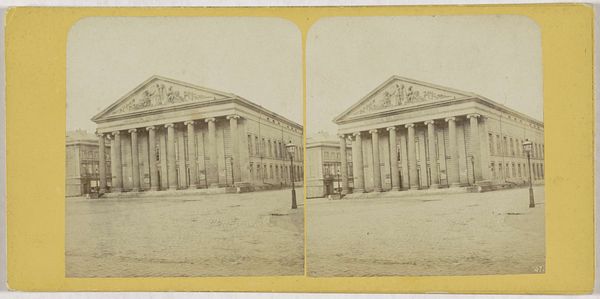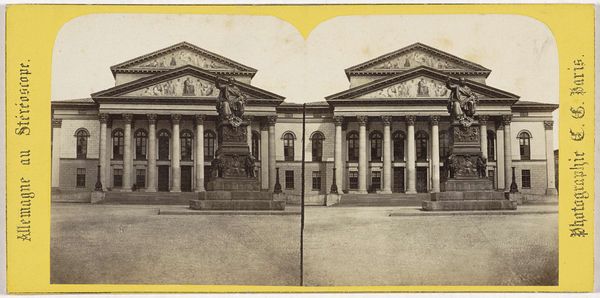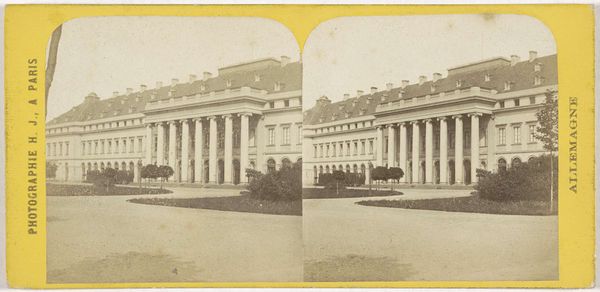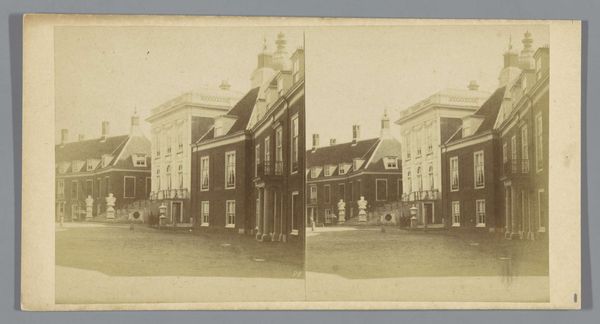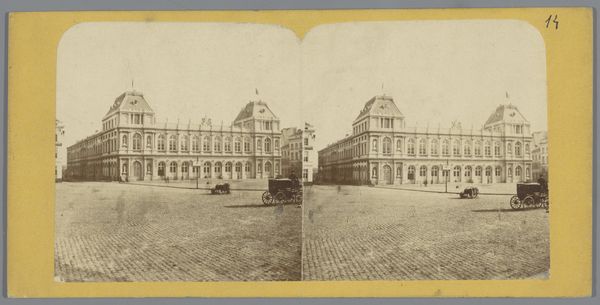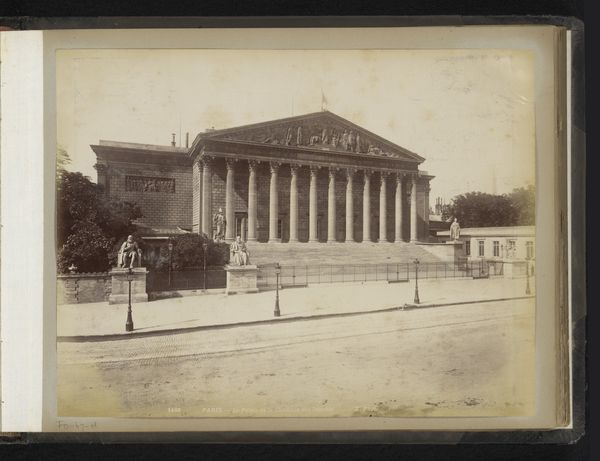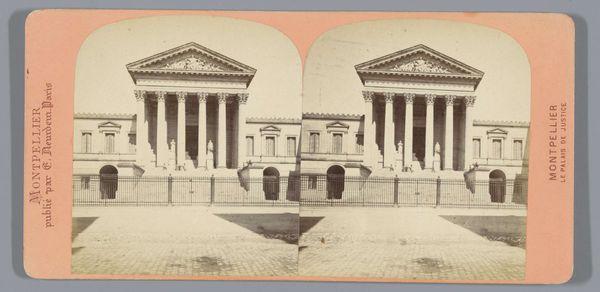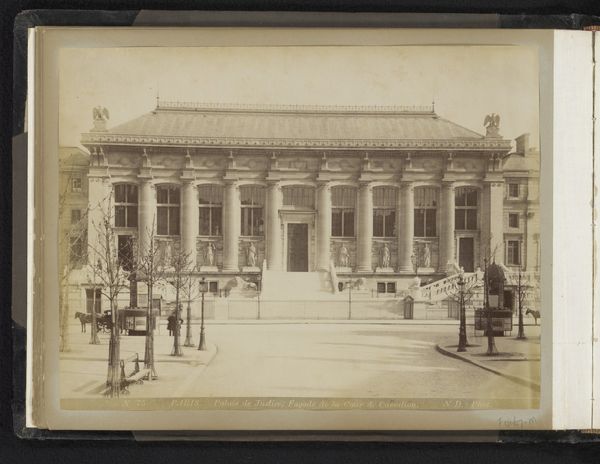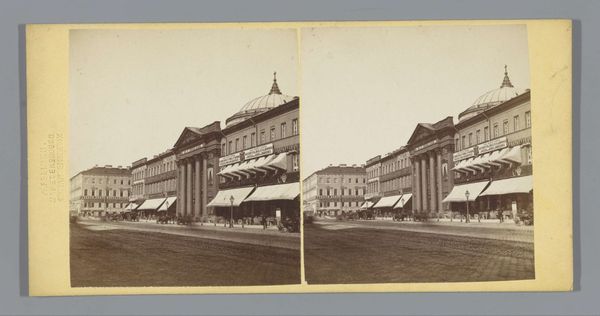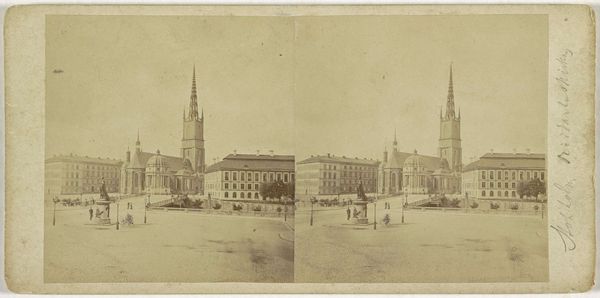
Gezicht op de Koninklijke Muntschouwburg in Brussel 1866 - 1870
0:00
0:00
juleshippolytequeval
Rijksmuseum
Dimensions: height 85 mm, width 175 mm
Copyright: Rijks Museum: Open Domain
Jules Hippolyte Quéval captured this stereoscopic image of the Koninklijke Muntschouwburg in Brussels using photography. The image invites us to consider the relationship between architecture, public space, and national identity in 19th-century Belgium. The Koninklijke Muntschouwburg, or Royal Theatre, was not merely a space for entertainment; it was a symbol of cultural and national aspirations in a newly independent Belgium. This photograph freezes a moment in time but also speaks to the enduring power of institutions and the narratives they perpetuate. It subtly reinforces a sense of national pride and cultural achievement. Notice the blurred figures which populate the plaza. Who were these anonymous passersby? Their presence is spectral, yet it reminds us that public spaces are always inhabited by diverse individuals, each with their own stories and experiences. The image invites contemplation about whose stories are amplified and whose are marginalized. As you reflect on this photograph, consider its role in shaping our understanding of Belgian history and culture. What stories does it tell, and whose voices remain unheard?
Comments
No comments
Be the first to comment and join the conversation on the ultimate creative platform.
